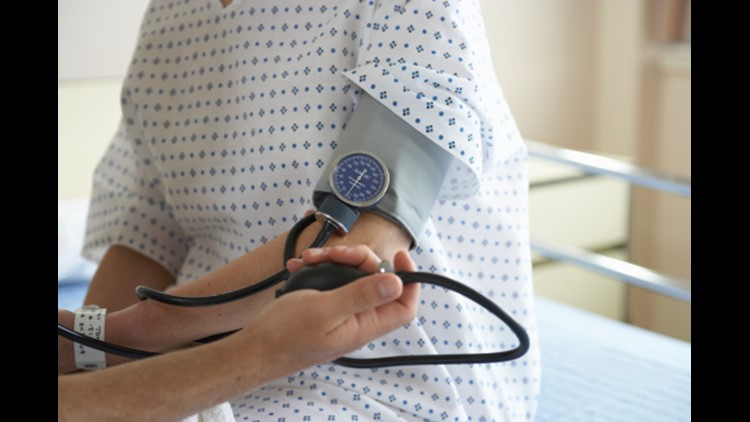Thirty million Americans are getting some bad health news: they have high blood pressure and need to do something about it, according to new aggressive hypertension treatment guidelines released by heart doctors Monday.
The doctors and other experts, from the American Heart Association, the American College of Cardiology and nine other groups, are moving the goal line for blood pressure control, meaning 46% of U.S. adults — about 103 million — could now be diagnosed with hypertension.
That's up from 32%, or 72 million, under older guidelines.
Most of those added people will be urged to change their diets, exercise more and make other lifestyle changes, rather than take medication.
The guidelines also call on patients already in treatment to work toward the lower goal – a reading of no more than 130/80, down from the old standard, 140/90.
While significant, the change is not as big as some experts expected after a study in 2015 showed reaching even lower readings saved lives.
The new goal strikes “an appropriate balance between efficacy… and safety,” for those who will be asked to take more medications that can have side effects such as dizziness and falling, said Bob Carey, vice-chair of the guideline committee and a professor of medicine and dean emeritus at the University of Virginia Health System School of Medicine.
It’s not clear how widely or rapidly front-line doctors will adopt the changes, but if and when they do, here’s what patients should expect:
• If your blood pressure is between 130/80 and 140/90, your doctor will say you have “stage one” hypertension and suggest losing weight, exercising, cutting salt and eating lots of fruits, vegetables and whole grains.
• If you have stage one hypertension and some additional risk factors – such as a previous stroke, heart attack, diabetes or kidney disease – you will be asked to try medication, along with lifestyle changes.
• If your blood pressure is above 140/90, your doctor will recommend you make lifestyle change and take two kinds of blood-pressure lowering medications.
• Patients already taking medications might be put on higher doses or additional drugs to reach the new lower goal. But those over age 65 will be urged to talk to their doctors about how aggressively they want to be treated.
The guidelines, presented at a heart association meeting and published in Hypertension and the Journal of the American College of Cardiology, also spell out exactly how health care providers and people at home should check blood pressure.
For example, doctors and nurses are urged to let patients rest five minutes first and then to average at least two readings over two visits. Patients are urged to take regular readings at home, with a device checked out by their health care providers.
Here’s why blood pressure matters so much: as we age, it tends to rise and slowly damage blood vessels, increasing risks for heart attack, stroke, kidney damage and other health problems. By the time readings reach 130/80, risks have already doubled, said guideline chair Paul Whelton, a professor of global public health at Tulane University School of Public Health and Tropical Medicine.
“We want to be straight with people – if you already have a doubling of risk, you need to know about it,” Whelton said. “It doesn’t mean you need medication, but it’s a yellow light that you need to be lowering your blood pressure."
The guidelines “have the potential of improving the health of millions,” and are supported by solid science, said David Goff, director of cardiovascular sciences at the National Heart, Lung, and Blood Institute.
The government agency did not help write or officially endorse the guidelines — a change from previous versions — but it did back key research, including the 2015 study showing the value of lower blood pressure targets. That study also showed many people can reach lower targets, Goff said.
Still, only about half of Americans with hypertension under the old guidelines have it under control, said Whelton, the guideline chair. “I don’t underestimate the challenge of what we need to do.”



